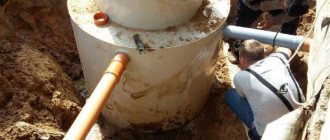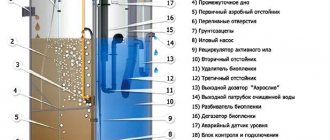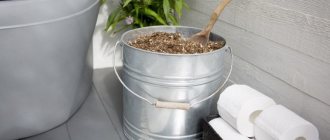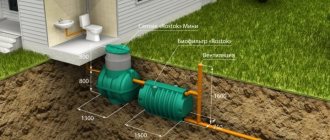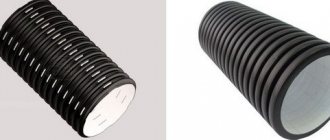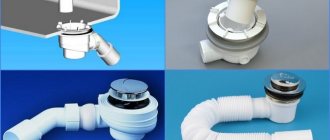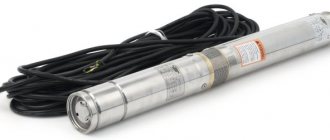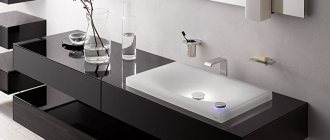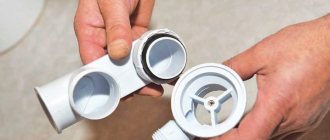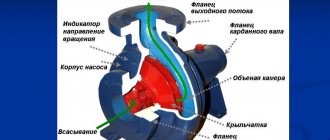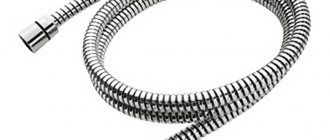Content
- Reasons for the need for cleaning
- Potentially hazardous substances in detergents
- What products are safe for toilets with septic tanks?
- Folk remedies
- How to properly clean?
In private homes, toilets and other plumbing fixtures are usually connected to a septic tank. This is a container made of steel and plastic into which waste water flows. A filtration system should be organized inside, and special bacteria should be added to speed up waste processing. Another option is periodic pumping of contaminated water using the services of special services with professional equipment.
But as soon as you move into a house with such a sewage system, the question immediately arises - how can you clean the toilet with a septic tank? It's not just about cleanliness and removing bacteria. The wrong choice of remedy can cause:
- Corrosion of walls and leakage . Then the wastewater will immediately fall into the ground or mix with groundwater. The result is the death of plants, soil poisoning, and the emergence of infectious foci.
- Death of beneficial bacteria . Then the entire filtration system, laboriously created on your site, will be useless.
Let's consider what compositions need to be used so as not to encounter the described difficulties.
Available natural cleaning products:
- Laundry soap is a type of soap with a large amount of fatty acids. It was originally made in Provence from olive oil, in Paris from peanut oil, and in England from palm oil. Modern natural laundry soap is made from vegetable oils, sodium and fresh water. It has one of the highest pH values - pH-12. Possessing high antibacterial characteristics, it is non-toxic and safe for both people and wastewater treatment plants. Used for washing dishes, washing clothes, wet floor cleaning.
- Ammonia is a clear liquid with a pungent odor of ammonia . Hydrogen indicator pH-11.5. Used in medicine and in everyday life. It is used to remove stains from clothes, clean plumbing fixtures, mirrors, crystal and glass.
- Hydrogen peroxide is an effective bleach . Peroxide is used to disinfect wooden cutting boards, refrigerators, and remove odors from plastic containers.
- Citric acid is used to clean toilets, sinks, faucets, hoses, tiles, and enamel baths.
- Ash is an effective degreaser. With its help, you can remove all the fat remaining on the skewers and dishes after cooking the kebab.
- Baking soda is used to descale teapots, burnt pots, and is used to clean children's dishes. Clean the sink drains by adding a few tablespoons of baking soda and adding vinegar.
- Vinegar removes stains on carpets, disinfects various surfaces, and removes odors.
- Universal washing and detergent based on soda and laundry soap
Reasons for the need for cleaning
Even if you have a septic tank, you will still have to periodically clean the plumbing. Among the main reasons:
- The appearance of pathogenic bacteria . Their reproduction can lead to intestinal diseases and outbreaks of dangerous diseases such as dysentery.
- The appearance of an unpleasant odor . The product should not only provide a disinfectant effect, but also refresh the plumbing fixtures and help ensure that there is no odor in the room.
- Maintaining a pleasant appearance . Due to improper care, a layer of plaque may appear. It is much easier to prevent its occurrence than to try to cope with the consequences.
Let’s try to figure out how to clean plumbing fixtures in the presence of a septic tank, so as not to harm both the container itself and the bacteria used in it.
Pros of biodegradable detergents
Even with careful use of powders and liquids that do not decompose in natural conditions, the load on the biological processing system increases by 1.5-2 times. In order not to reduce its performance, you have to buy a more expensive septic tank with a power reserve. But even extra financial investments do not solve the problem, since aggressive chemicals still harm the microflora. It is better to use washing powder that is absolutely safe for septic tanks.
Biodegradable environmentally friendly detergents have many advantages over traditional preparations:
- almost 100% natural composition - the role of softeners, cleaning and bleaching additives is played by bioenzymes (they wash fabrics no worse than synthetic MS);
- no harmful effects on the human body - powders are suitable for allergy sufferers and young children;
- ease of rinsing - detergent components decompose after contact with dirt and do not linger in the fibers of the fabric;
- safety for any living organisms.
The only disadvantage of organic products is their relative high cost.
Review of recommended powders and liquid preparations
Biodegradable powders and liquids are produced by global and domestic companies.
Table 1 provides a select list of brands recommended for use in the presence of a septic tank.
Table 1
| Product brand | Manufacturer |
| NNPTSTO | Saint-Petersburg, Russia |
| "Pro-Bright" | Pskov, Russia |
| NISSAN | Japan |
| Mini Risk | Henkel Norden Oy, Finland |
| Neutral | Blumoller, Denmark |
| Gel Persil | Henkel |
| SA8 (Amway) | Amway, USA |
| ECOVER | Belgium |
Environmentalists recommend washing powders with the following logos.
- Falcon. The label was developed by the Swedish Nature Society and is applied to a wide variety of Scandinavian products. It is distinguished by strict criteria for product compliance with environmental standards.
- Northern swan. Products in this group are subject to less stringent requirements than the previous ones.
- Eco flower. The official symbol adopted by the EU to represent the environment. Assigned to high quality products that are “friendly” to nature.
- Blue Angel. German logo, known back in 1978. It is featured on more than 3,500 environmentally friendly products.
A brief description of brands of soft, eco-friendly laundry detergents will help you make your choice.
- ECOVER. All powders of this brand are made on the basis of plant extracts and sugar, do not contain surfactants, and are hypoallergenic. With ecocover you can wash things at a temperature of +30-60°C. Thanks to the biodegradable formula, particles of the product are washed out of the fabric without leaving a residue, and the used water can even be used to water plants. The powder is ideal for daily washing when removing wastewater from Biodeka, Astra, Topas septic tanks. The ECOVER line also includes a natural stain remover that effectively dissolves traces of blood, wine, and dirt.
- Frosch. Organic-based washing powder recommended for newborns and those prone to allergies. The composition does not contain chlorine, parabens, lauryl phosphates, or alkalis. Copes well with dirt of various origins and does not deform the fabric.
- Amway. Concentrated powder, used in small doses. The product formula includes bioenzymes, active oxygen, natural softeners and bleaches. The product does not contain surfactants and chlorine, and is used when connecting to an autonomous sewer system. Effectively removes coffee, blood, greens, grease and oil stains. Easy to rinse and does not cause skin irritation.
Washing liquid "Synergetic". This is a biodegradable product without chlorine, surfactants and parabens, suitable for children's clothes and delicate fabrics. “Synergetic” dissolves old and complex stains, its operating temperature range is from 40 to 60 ° C.
Potentially hazardous substances in detergents
To choose the right household chemicals for washing plumbing fixtures, you need to pay attention to its composition. It should not contain the following groups of substances:
- Chlorine compounds . If you use bacterial preparations or full cleaning parts, chlorine will kill them. Upon contact with a microorganism, the substance affects enzymes, which leads to irreparable changes and gradual death.
- Surfactants . On the box of products they are usually designated as surfactants and are characterized by increased activity. They act in the same way as chlorine - they kill bacteria. If the complete death of microorganisms does not occur, there is a high risk of changes in their vital activity - gradually the bacteria will become useless. The anionic subspecies falls into the category of especially dangerous ones. Many European countries have banned the use of such components, but in Russia you can still find formulations with extreme concentrations - be careful when choosing.
- Phosphates . They are used together with anionic surfactants and greatly increase their danger. In Europe, such products have not been found on shelves for more than 20 years. We do not recommend using them even if your home has a regular sewer system.
- Phosphonates . They can be found in many bleaches. They have a whole bunch of dangerous properties - they make surfactants toxic and settle in sludge. If you use such substances, then you can forget about bacteria.
We also do not recommend using powders with a strong bleaching effect, products containing phenols, or aggressive petroleum products.
Can I use household chemicals?
Treatment stations for centralized water supply are equipped with special chambers in which wastewater is treated, preventing harm to microflora. If household chemicals end up in a private septic tank, the bacteria may die. Then the feces directly flow to the filtration fields: this becomes clear from the characteristic smell. It may take up to 2-3 months for the station to return to normal operation.
Chlorine powder is especially harmful to a septic tank. If the plum contains a small percentage of chlorides, aerobic microorganisms will survive, but will slow down processing. In the event of a massive discharge of chlorinated water (when a washing machine fails), the consequences will take a long time to eliminate. People often ask whether ordinary washing powder without chlorine, as well as other detergents, are dangerous for septic tanks.
Below are brief characteristics of various drugs.
- Powders or gels with phosphates. Metal compounds with phosphoric acid remove dirt well. They bind calcium ions (soften water) and stimulate the work of surfactants (surfactants). Side effects of phosphates are the destruction of some aerobic microorganisms and provoking the growth of algae.
- Phosphate-free powders. They can be used in limited quantities in septic tanks, however, an increased concentration of surfactants also adversely affects the microflora.
- Regular shampoos, soaps, dishwashing gels (except for cleaning abrasives), conditioners, toothpastes. They can be used in minimal quantities.
- Alcohol-containing products. Bath concentrates and cleansers with ethanol, perfumed fragrances have a detrimental effect on living microorganisms. The septic tank ceases to perform cleaning functions, becoming an ordinary waste storage facility. The death of beneficial flora in winter is especially undesirable. In summer it is easier to clean the chambers and sedimentation tanks and pump out feces from the pit. In winter, waste freezes, making cleanup more difficult.
The main principle when choosing washing powder for a septic tank is the absence of chlorine, phenol, phosphates, and surfactants in its composition. Aggressive bleaching agents and alcohol-based stain removers should not be used.
For occasional visits to the dacha and rare washing, it is permissible to use ordinary powders with a balanced composition: Persil, Ariel, Tide, Ushastogo Nyanya. Moderate consumption of these brands will not cause massive bacterial death in VOCs.
What products are safe for toilets with septic tanks?
If you read the composition of many products collected in the store, you may be confused - many of them will be dangerous for the septic tank and the environment. There are not many truly safe formulations on the market that would not harm bacteria and waste container materials. Among them are:
ZERO. This substance is in the form of a gel. Its convenience lies in the fact that one composition is suitable for the toilet, bathtub, sink and even wall tiles. It has an antibacterial effect, removes dirt and stains well, and fights dirt and soap stains. We recommend that you pay attention to the entire line of household products - they are safe and biodegradable.
MEINE LIEBE. A good answer to the question of how to clean a toilet with a septic tank. The product copes well not only with bacteria, but also with any type of deposits - from urinary stones to lime build-up. It can also be used to combat rust. The list of advantages includes the permissibility of use even for toilets with the American system, when the bowl is filled with water. The composition is useful if you are using a full-fledged biological treatment system - it does not harm bacteria.
FROSCH. The composition does not contain hazardous substances - chlorine, aggressive acids and alkalis. The plaque is removed quickly, and you can forget about urinary stones. There are several flavor options, including mint.
ORGANIC PEOPLE. It is based on a natural component – organic pine oil. It provides freshness, a pleasant aroma, and disinfects well. There are no aggressive components in the composition.
Other types of products include Ecover, AlmaWin, Sonett, CHRISAL.
There is also a blacklist of potentially dangerous but common products. It is worth excluding Domestos, Toilet duck, Comet, Cillit from the consumer basket.
Remember that it is wrong to look only for a toilet cleaner for a septic tank - you need to control all the drains in the house. A situation may occur when the plumbing fixtures are washed correctly, but the damage is caused by washing powders and products used in dishwashers.
To prevent this, use:
- For washing machine. BIOMIO, AMWAY, FROSCH, KLAR, SYNERGETIC powders are suitable. Many of them contain biodegradable and plant-based components that do not harm either the septic tank itself or the environment.
- Dishwasher safe. You can use products such as SODASAN, ECOVER, OPPO and others.
At first it may seem that the effect of washing has become worse. This may require you to add more cleaner. The use of such products will reduce the risk to the environment and reduce the risk of allergies.
Which laundry detergent is best?
Uncontrolled use of household chemicals for cleaning and washing can lead to the death of bacteria and the loss of the septic tank’s functions.
It is important that washing preparations do not contain substances that can harm the septic tank of any type of organization.
Harmful substances
The sensitivity of septic tank bacteria to aggressive chemicals imposes severe restrictions on the choice of laundry detergents.
One of the most undesirable components of laundry detergent is chlorine and its derivatives .
This is a toxic substance that leads to the death of bacteria. Bleach and products intended for washing white items may contain chlorine.
In addition, laundry detergents should not contain:
- phosphates;
- APAV;
- phenols.
Discharge of a small amount of prohibited substances can occur in a septic tank without unpleasant consequences. But with large volumes of drugs harmful to bacteria, a long period of recovery will be required.
If all or most of the bacteria in the septic tank die, the wastewater will no longer be processed normally. Without proper cleaning, an unpleasant odor characteristic of sewage will appear and contaminated wastewater will continue to flow into the system untreated.
Harmless
Substances that do not harm the septic tank include natural remedies:
- soap and soda;
- lemon acid;
- ammonia;
- peroxide.
Detergents containing these components will help maintain the functionality of the septic tank. They are used as part of safe eco-powders.
The rating of eco-powders is presented in this article.
Folk remedies
If you want to completely eliminate household chemicals, you can also use folk remedies for cleaning plumbing fixtures. They are safe for beneficial bacteria, give a good effect, and provide freshness.
A professional toilet bowl cleaner for a septic tank can be replaced with the following components:
- Table vinegar . You can take a little of this composition, heat it to a temperature of about 40 degrees, and then apply it to the surface of the toilet. It is best to do this at night, because the plumbing fixtures cannot be used for up to 12 hours. After time has passed, all that remains is to wash off the vinegar with water. The concentration is very small, so you don’t have to worry about the septic tank and bacteria. The effect is good - the toilet will be clean, the plaque will come off, and the smell will disappear.
- Lemon acid. You will need two bags. You can use them as a cleaning powder - simply sprinkle them over the entire surface of the dry toilet bowl and rub. The plumbing remains in this state for about half an hour. After rinsing with water, purity will be completely restored.
- Soda. Suitable not only for the toilet, but also for washing in the kitchen, because it copes well with fatty deposits. You can use a saturated solution or a dry composition. Cleaning will also take time. If the plumbing is heavily stained, it will take about two hours to remove it.
Some experts also recommend using Coca-Cola. The popular drink will remove stains from your plumbing in about five to six hours.
Blacklist of some funds
| Name | Compound |
| Eared nanny | Non-ionic surfactants, defoamer (less than 5%), anionic surfactants, oxygen-containing bleaches, carbonates, silicates (5-15%), phosphates (15-30%), enzymes, optical brighteners, fragrance) |
| Powders | contain phosphonates and optical brightener |
| "Stork" | contains phosphates |
| Pemos | less than 5% polycarboxylates, 5-15% anionic surfactants, optical brightener, fragrance |
| ARIEL | 5% or more, but less than 15%: anionic surfactants, oxygen-containing bleach; less than 5%: cationic surfactants; EDTA and its salts, nonionic surfactants, phosphates, phosphonates, polycarboxylates, soap, zeolites; optical brighteners, enzymes, fragrance. |
| TIDE | 15-30% - anionic surfactants, phosphates, less than 5% - cationic surfactants, nonionic surfactants, polycarbosilicates, oxygen-containing bleach. Additionally: enzymes, optical brightener. |
| MYTH | 5% or more, but less than 15%: anionic surfactants, phosphates; less than 5%: nonionic surfactants, oxygen-containing bleach, polycarboxylates; optical brightener, enzymes, fragrance. |
| PERSIL | 5-15% anionic surfactants, water, nonionic surfactants, 5% phosphonates, soap. Also optical brightener, enzymes, preservative, fragrance (benzylsalicylate, butylphenylmethylpropional, citronellol, hexylcinnamal). |
| AMELY powder | contains phosphates, A-surfactant |
Instead of using non-biodegradable washing powders and detergents, you should:
- Find a convenient and biodegradable replacement, make a systematic list of such products (for example, use homemade natural products like soda and vinegar for one thing, and purchased biodegradable products like Ecover, Almawin, etc. for something else - see "WHITE LIST" below),
- Add SMS household chemicals to your list, which can be used only in extreme situations, when there is no replacement, and in doses that are insignificant for nature.
How to properly clean?
To clean the toilet, you will first need to carefully read the composition of the product and its recommended dosage. We recommend studying the proportions of the components included in the product, even if it is indicated on the front side that use with septic tanks is acceptable.
After this, cleaning takes place in several stages:
- Washing the bowl. Depending on the method of using the composition, you can apply it and wash it off immediately or leave it on for a while. The work uses a sponge or a special brush. Particular attention should be paid to the area under the rim - a lot of bacteria accumulate there. Another risk area is the drain area filled with water. Urinary stone deposits may form there.
- Wash the outside of the bowl and tank . If there is a septic tank, you also need to clean the outside of the toilet using safe products, because they will end up in the drain.
- Cleaning small parts. We recommend thoroughly wiping the areas near the toilet seat and the rim itself.
Even if the packaging does not indicate this, it is best to leave the product on for a while so that it can cope with bacteria and plaque. This is especially important for biodegradable substances because their action time is longer than that of the aggressive substances that many are accustomed to.
We have discussed in detail what cleaning products can be used in a septic tank. Remember that even if the house is connected to a cesspool, there is no septic tank and the risks are small, it is better to give preference to safe compounds . The reason is simple - aggressive substances can harm the environment, plants and trees on your property and among your neighbors. Take responsibility for keeping your toilet clean and you won't have any problems.
You may also be interested in our class=”aligncenter” width=”800″ height=”600″[/img] Septic tank pumping
Mechanical cleaning of sewer pipes
Pumping and removal of concrete waste
| How to contact us: | |||
| +7 | Request a call back | ||
| [email protected] | Order a service online | ||
Tips for washing
A special washing powder or liquid product that is safe for a septic tank is used, following the instructions included with the product. A number of simple practical recommendations will help you avoid disrupting the operation of your septic tank.
- When preparing for washing, the machine is loaded according to the passport data. If there are few things, turn on the economical water consumption mode and, accordingly, reduce the dose of detergent. It is advisable to install a washing unit with functions of energy saving and laundry weighing.
- Using biodegradable preparations, their rate is adjusted depending on the hardness of the water and the degree of contamination of textiles. In case of an overdose, the quality of washing does not improve; expensive powder will be wasted.
- It is better to divide a large volume of dirty clothes into several passes so as not to overload the septic tank and give it a chance to recover.
- Carefully check the items to be washed. Among them there should be no items that clog the septic tank - dental floss, cotton swabs, paper napkins, tampons or pads.
Forms of biological products for cesspools
Biological products are produced for septic tanks in various commercial forms; the rate of growth and activation of microorganisms and the time during which they spread throughout the container depend on this factor. Each form has its own advantages for certain conditions of use. There are live bacteria on sale for septic tanks and cesspools in the following categories:
- powdery;
- liquid;
- tableted.
What to do with bacteria in powder form
Biological products in powder form most often represent a concentration of adapted anaerobic bacteria. These are saprophytic microorganisms that have very high rates of reproduction, and therefore efficiency. Bacteria that are in a “dormant” state are packaged in bags or other containers. When placed in a nutrient medium, microorganisms begin to actively multiply.
The procedure for using powdered biological products is to dilute them with water and deliver them to a septic tank. The packaging indicates the dosage of the product for a certain volume of liquid. The powder is diluted with warm water at the specified temperature to activate bacteria and the resulting solution is poured into a septic tank - into a cesspool, hatch or toilet, then washed off with water. After a certain time interval specified by the manufacturer (usually 10-14 days), the number of bacteria must be replenished. Powder preparations can be used for any type of septic tank; this form is often used to clean cesspools.
In our store you can purchase a concentrate of microorganisms to improve the performance of septic tanks and cesspools Latrin Bio in powder.
Liquid solution for cesspools
The main advantage of such biological products is the uniform distribution of microorganisms, thanks to their liquid form. Most often, such products contain anaerobic cultures that work in an airless space with large volumes of organic waste, or a complex of various microorganisms. Bioactivators containing a combination of living bacteria are especially convenient.
In our store you can purchase a biologically based septic tank product Latrin Bio
Microorganisms are in concentrated liquid form; before use, the concentrate is diluted with water and added to the septic tank. The product dissolves organic matter, cellulose, eliminates unpleasant odors and destroys pathogenic microbes. Due to the decomposition of solid sediments, the number of wastewater pumpings is significantly reduced. The drug is harmless to health and the environment. Used for cleaning cesspools and multi-section septic tanks.
Toilet tablets
A tablet is a universal form of release of a biological product. The advantage of such means is their ease of transportation and use. They usually have a complex composition that provides comprehensive purification - aerobic and anaerobic bacteria, catalysts, enzymes, nutrients and other components. The tablets do not require pre-treatment and are suitable for almost any septic tank and cesspool.
It is important to remember that the effectiveness of biological products does not depend on the initial state. It depends on the composition of the drug and the concentration of microorganisms in it. The more bacteria in the product, the more effectively it will work, and the less often you will have to add the drug to the septic tank. The main thing is to follow the rules for using the products specified in the instructions in order to create conditions for bacteria to live.
Dangerous chemicals in everyday life
When installing a turnkey septic tank, the correct choice of household chemicals is appreciated. Otherwise, it causes problems in the operation of the sewage system for a country house.
Chemicals that are unsafe for bioseptic tanks:
- shampoos for cleaning carpets;
- gels and powders for treating sinks and bathtubs;
- liquid glass and toilet cleaners;
- alcohol-containing stain removers.
It is advisable to install a septic tank in a country house and replace aggressive chemicals with harmless products.
The operation of home septic tanks will cause fewer problems if you reduce the use of synthetic detergents. In addition, environmental safety is guaranteed. Among the natural preparations for cleaning a septic tank are soda, laundry soap, and lemon juice.
Questions and answers about Topas
Ask a question Our specialists will answer any question you may have about the service
Frequently asked questions about deep biological treatment stations based on the principle of aeration: Topas, Astra, Yubas, Ekodin and others.
- Since the purification is biological, is it necessary to “introduce” bacteria into the Topas purification system?
- What can and cannot be dumped at Topas station?
- We don't live in the country in winter. Do we need to turn off the station while we are away?
- Our electricity goes out from time to time. How will this affect the operation of the station?
- Where can purified water from the station be discharged?
- I have nowhere to dump purified water on my property. Is it possible to find a way out?
- Which station is better: gravity or forced discharge?
- Does your septic tank require regular cleaning?
- Is a sewage disposal truck needed to clean the station?
- I have a high groundwater level in my area. Will the station “pop up” in the spring?
- At our dacha there are often voltage drops in the electrical network, how will this affect Topas electrical equipment?
Since the purification is biological, is it necessary to “introduce” bacteria into the Topas purification system?
There is no need to introduce special bacteria into the Topas system. The bacteria necessary for wastewater treatment enter the septic tank along with the wastewater, and favorable conditions for their life are created in the station.
Bioactivators and other agents are used in settling pits, storage tanks, compost heaps, etc. and so on. but not in TREATMENT FACILITIES.
What can and cannot be dumped at Topas station?
You can drop the following into the Topas station :
- water-soluble toilet paper;
- detergents and cleaners without chlorine;
- chlorine-free washing machine drains;
- showers and bath drains;
- kitchen drains;
it is forbidden:
- construction waste (lime, sand, cement, etc.);
- polymeric materials and other biologically non-degradable compounds (contraceptives, sanitary pads, cigarette filters, packaging films, etc.);
- petroleum products, fuels and lubricants, paints, solvents, acids, alkalis, alcohol, etc.;
- household and garden waste, fertilizers and other gardening waste;
- garbage from forest mushrooms, rotten vegetables;
- waters used for washing pool filters containing disinfectant components (ozone, active chlorine, etc.);
- rinsing (regeneration) waters from water treatment and purification plants using potassium manganese and other external oxidizing agents;
- a large amount of waste after bleaching clothes with chlorine-containing preparations (“Persol”, “Belizna” and the like);
- drugs and medications;
- a lot of pet hair.
We don't live in the country in winter. Do we need to turn off the station while we are away?
If a country house is mothballed for the winter, then the station can also be mothballed - the power supply to the station is turned off, the sludge is removed, the station is filled with water evenly in all chambers. You can read more about conservation of topas in our article. If the house remains warm and the dacha is visited on weekends, then there is no need to turn off the station. The design of the Topas treatment plant allows for long breaks in its operation, i.e. the treatment plant can operate in idle mode for up to three months (without the flow of waste) without any harm to microorganisms.
